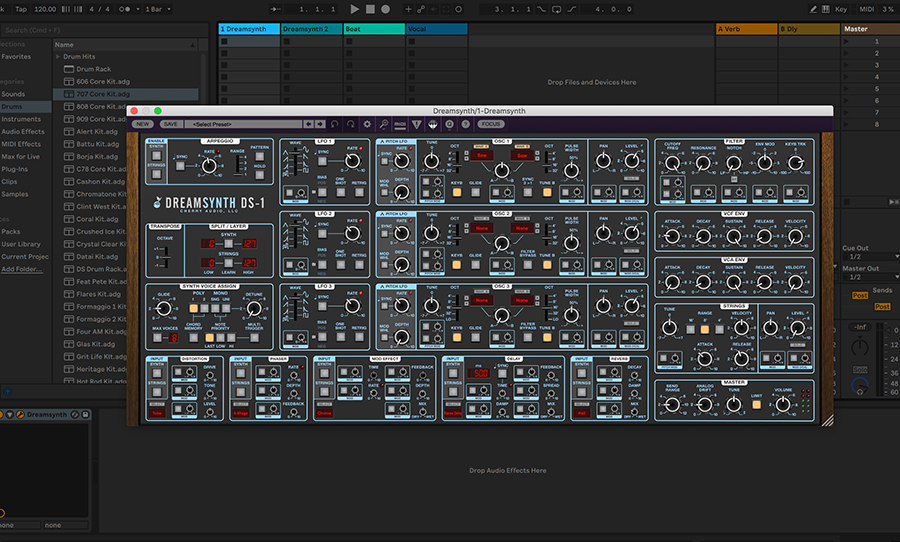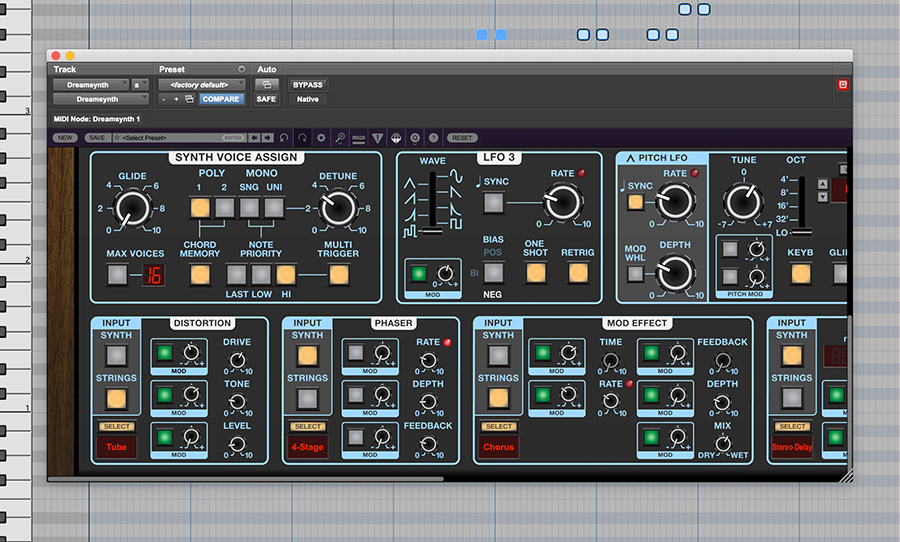Cherry Audio’s new Dreamsynth is an ’80s synth playground. With a nostalgic layout, it’s packed with features for the modern music producer.
Cherry Audio is a software company that was launched in 2018 by a team of innovative and creative developers, synthesizers designers, sound programmers and musicians. Stepping outside of their usual replications of classics, Cherry Audio has just released the Dreamsynth.
Drawing on inspiration from late ’80s synths — when a transition from analog to digital was occurring — the Dreamsynth is a classic sound with modern features. It’s a “what if” synth, allowing you to quickly dive in and tweak to your ear’s content. Let’s dive into this powerful engine.

A modern classic
Dreamsynth was inspired by the Ensoniq ESQ-1, the Kawai ‘K’ series, and the Sequential Prophet VS. You’ll notice that as soon as you open the plugin you will feel like you are using a synth from yesteryear. Although, as you dive in you realise you can do much more than those big hybrid machines of the ’80s. The Dreamsynth is beautifully laid out (read: no agonising menu diving) and it’s very easy to visualise the signal flow.
There are three oscillators, three LFOs, an arpeggiator, a deep filter, a VCF envelope, a VCA envelope, five effects, an expansive Master section plus more. The effects — Distortion, Phaser, Modulation Effect, Delay, and Reverb — are worth a mention as they can be varied to your delight. Cherry Audio has even included their own reverb titled Galactic as 1 of 5 options.
The ‘dream’ is found in the classic string synthesizer that operates independently of the three oscillator synthesizer. Further to this, you can assign effects and the arpeggiator to either or both the synth or the strings: very cool.
A dream for all users
Whether you call yourself a synth novice or expert, you’ll be able to quickly get a great sound from the Dreamsynth. If synthesis (and the modules involved) is a bit intimidating, then you can quickly find a sound well categorised preset menu. In the Ambient category, Unexpected Passenger was my favourite preset and in Tuned Percussion, I loved Evil Timpani.
Using the aforementioned presets, I was able to create my own interesting and unique sounds. For example, I enabled the Arpeggiator on the Synth only — not the Strings — so it sounded like I had two instruments loaded up in my session, which is convenient and saves on CPU.
I found a range of soundscapes on the Dreamsynth easy to access, especially with its ability to change the GUI size and the shortcut to zoom in. Sounds were really pleasing and useful straight away and if I did want to dive in and tweak the presets on offer — as well as the destination of modules — the process was a piece of cake.
Visit Cherry Audio for more details.



